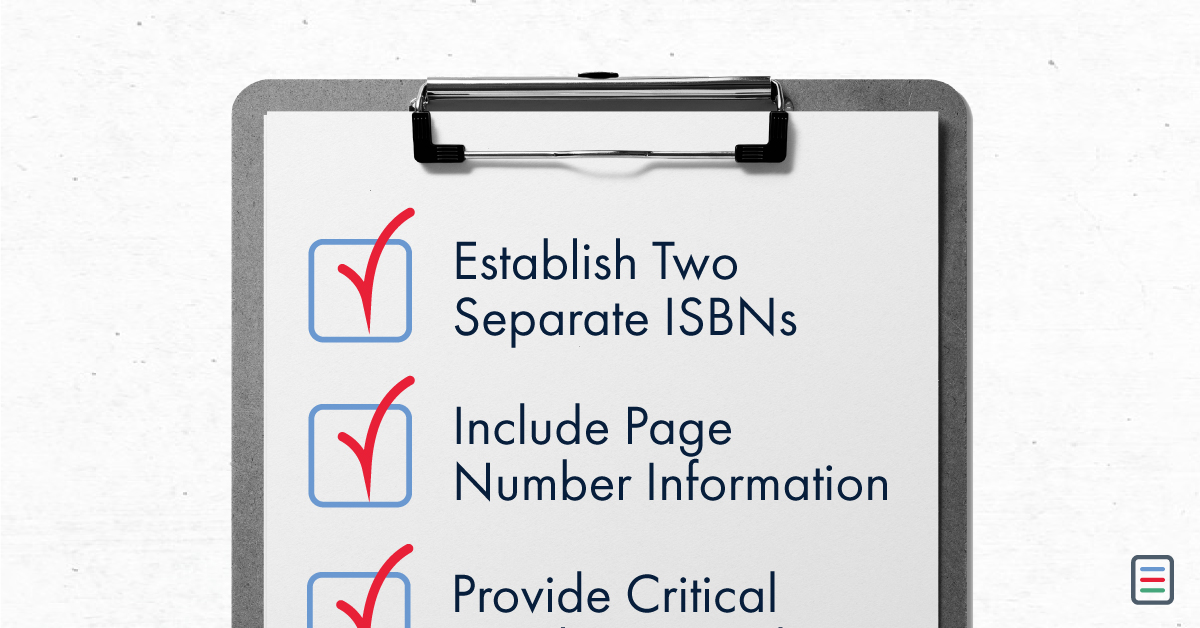Distributing digital course materials to more than half of colleges and universities nationwide, RedShelf is known for helping set the standard of quality in digital publishing and distribution. We take great pride in working with each of our publishing partners to convert your valued content into the most cutting-edge and high-grade digital publications available.
The following overview details several critical strategies and tactics to help you maximize the discoverability, accessibility, and interactivity of your digital titles, for distribution through RedShelf.
- Establish Two Separate ISBNs:
Although you may already have an ISBN assigned to the print version of your title, ISBNs should be used to identify each separate digital publication. You will need to create a second ISBN for the digital version of that content for distribution through RedShelf. Submitting both the print ISBN as well as a new, digital ISBN (or “eISBN”) will enable RedShelf to associate the title types across our distribution channels, ensuring the broadest possible exposure and revenue opportunities for your title. - Include Page Number Information:
Digital books, by definition, do not have “pages” in the traditional sense, as each individual reader sets font sizes according to personal preferences, which in turn alters page/screen length. Nevertheless, to ensure that every student using a digital edition of your content can easily locate a specific print-based page being referenced by a classmate or instructor, we ask that you provide page numbers and related Table of Contents. - Provide Critical Catalog Metadata:
To effectively store and track your book in our large catalog of titles, we will ask you to submit a variety of “metadata” (i.e. basic book-related information such as title, author, ISBNs, description, accessibility features, etc.) in one of two ways. The first option is to submit your metadata through an ONIX feed if your organization has established that automated channel. The second option is to complete a RedShelf Excel spreadsheet that includes a column for each piece of required information. Note: Publishers that have existing Inclusive Access agreements with Follett stores, will also be asked to provide a unique ISBN and the pre-negotiated pricing for each “Follett ACCESS” title. - Pre-Test Your File:
To ensure that the file you submit can be successfully ingested into our platform, and that it will meet accessibility standards while allowing readers to enjoy our dynamic eReader features, pre-testing is key. We recommend that you run your file through one of the following free services before sending to RedShelf: Readium, ACE by DAISY, or ePubCheck. In addition, RedShelf is eager to work with you as a close collaborative business partner, and we will always forward any file-related feedback our Customer Experience team may receive from student users. - Submit Your File in ePub Format:
Although an eBook can certainly be created from a simple PDF file, those publications generally have less of the flexibility and interactivity that make digital books so appealing. Submitting your content not as a PDF but as the more accessible and optimal EPUB will allow eReader platforms such as RedShelf’s to more fully bring your text to life.
